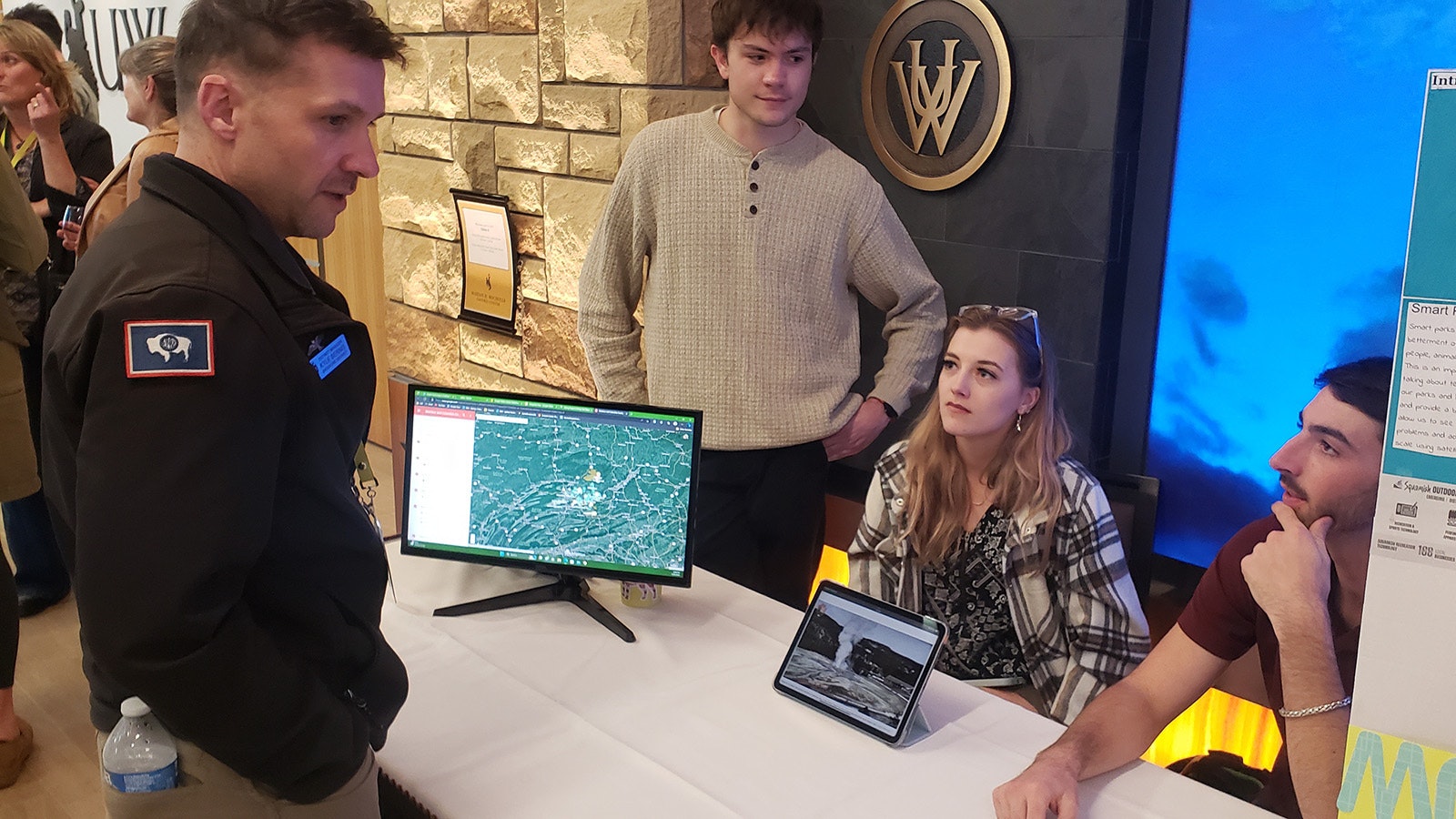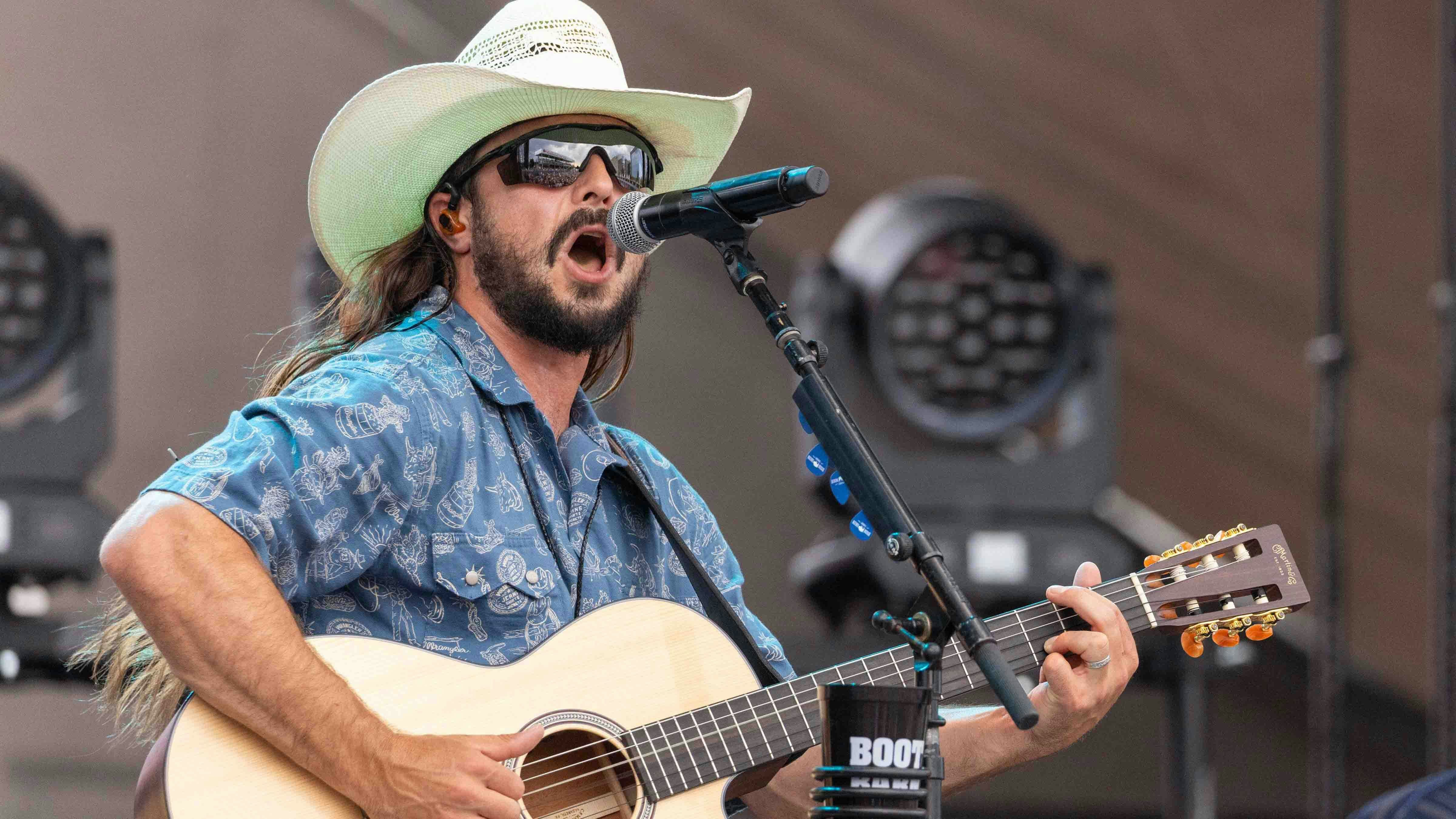Two things have captured the fancy of Generation Z like nothing else: smartphones, which they are never without, and the great outdoors.
It’s only natural that, as a generation, they’d be interested in how two of their favorites might grow together.
Smart Parks was among a dozen capstone projects University of Wyoming students brought to the Emerging Issues Forum: Outdoor Recreation: Build It The Way We Want It Conference in Laramie this week.
“Right now, Star Link is not economic,” Colin Loch told Kyle Bernis, Shoshone District manager for Wyoming State Parks. “But then, you also have to think about, do you want to go down and put infrastructure like cell towers and stuff like that when technology like Star Link is right on the cusp, right? It’s getting better.”
Bernis told Cowboy State Daily that they are already using some “smart” park technology, including QR codes that feature videos of park rangers talking about features along trails.
“Some of (the technology) is beyond what we can do right now,” he said.
But he believes more smart technology for parks is on the horizon. Regardless of whether some might question if the modern world and technology really belong in the park experience, Bernis believes park managers will have to keep up with what other parks are doing, to remain competitive and retain visitors.
Safety Is Big
Loch’s counterparts on the Smart Parks capstone project are Sydney Huotari and Erik Zafft.
Huotari’s interest is how technology might be used to get youths into parks, while Zafft is looking at how the technology can be leveraged to preserve wildlife and the quality of natural parks.
Their research has found that the general public, particularly their own generation, want parks to be technologically smarter for safety.
Access to maps, for example, can help keep people from getting lost. It can also ensure that if someone becomes injured, help is accessible.
“That’s where a lot of people are feeling that they need more technology and safety education,” Huotari said.
Smart Parks are already a big thing in Africa, Loch added, where it’s being used to stop poaching gangs.
But Technology Should Not Be Seen
The idea Loch and his colleagues have though, is not meant to have the modern world intruding on the park experience, but to tastefully enhance it.
Solar-powered trash compactors, for example, could help keep parks tidier with less labor, and restroom occupancy sensors could let staff knowwhen cleaning or more supplies are needed.
There are also things like self-healing concrete, energy-harvesting tiles, smart lighting fixtures, pedestrian or bicycle counters — all of which is just beginning to scratch the surface of what technology could do to enhance outdoor experiences without being overly obvious.
Among the immediate applications Huotari, Loch and Zafft have seen are QR codes like those Bernis mentioned, which provide additional information about the history or interesting facts along a trail.
It’s like a walking tour, but one where the guide is the smartphone in your hand. The narration can be text-only, or it can be audio or video. Some include supplemental photographs and historical documents. Those taking a video or audio tour can listen with headphones, so it’s not disturbing anyone else.
Technology can also be a hook, Huotari believes, to bring a new generation and the outdoors together.
“A lot of the younger generation don’t want to go outdoors, because they’re growing up on iPads or computers and all of that,” she said. “So there’s a lot of new technology that integrates children into education, to help bring them outdoors.”
Preserving Parks
Park personnel have long been over-extended, covering broad swaths of territory that must support multiple — and sometimes competing — uses.
Yellowstone, for example, is 3,742 square miles — as big as Connecticut. It’s impossible for park personnel to be everywhere they need to be.
Remote sensors and cameras, however, could help extend the oversight park personnel can manage at one time. They could be placed in lakes to track eutrophication, or they could be used to monitor problem areas where enforcement is a matter of public safety.
Bernis said the latter is something the Shoshone District he manages is already doing in some cases.
Cameras, meanwhile, can also include visual spectrums outside human perceptions, like infrared. That enables them to monitor for diseases, pests, and other problems not immediately visible to the naked eye. That early warning system can help flag trouble spots before they become catastrophic.
“Like you have big national parks, and then we have places where all these pine beetles just came through in Wyoming,” Loch said.
Cameras could monitor problem areas for a new infestation and help flag where a burn would be most effective in getting rid of them.
It could also be used to track populations of wildlife, helping monitor the health of elk or other herds with less physical labor involved.
Zafft also sees opportunities to leverage smart technology in parks to inspire and engage youths, so that they are more connected to the outdoors and understand how important it is to protect this resource for future generations.
“That creates better stewards of the environment for our natural spaces,” he said. “I sometimes have a little hesitancy to use technology in terms of, you know, conservation, but I think there really are some great ways with these new and innovative strategies that we’ve been talking a bout to not only help more people engage, but also preserve our wildlife.”
Dozens Of Bright Ideas
The Smart Parks project was just one of a dozen or so capstone projects University of Wyoming students brought together for stakeholders from across the state — from Jackson, the Big Horn Mountains, Wind River and more — as about 200 people gathered in Laramie to dream big about the future of outdoor recreation tourism in their communities.
Rep. Sandy Newsome, R-Cody, was among the students’ many admirers.
“It’s incredible to get so many people together who are passionate about the same thing,” she told Cowboy State Daily. “To see them all in the same room talking about the challenges and the solutions and how do we move forward? What are the things we want to do? How do we put together the people and money, and then all of the things that need to happen to make that a reality?”
The student projects embodied the spirit of what the Emerging Issues Forum: Outdoor Recreation: Build It The Way We Want It Conference was all about, Newsome said. She was thrilled to see all the passionate discussions taking place at tables across the conference room simultaneously, and particularly thrilled by what she saw all the students working on.
“(The students) put so much effort and so much work into their presentations,” she said. “And I enjoyed visiting with them and getting to know, you know, kind of why they chose the subject matter they chose, and their process of finding out the information.
“And they were just so excited and full of energy and that is, that’s great. And ultimately, you know, it’s theirs to direct how it goes from here.”





